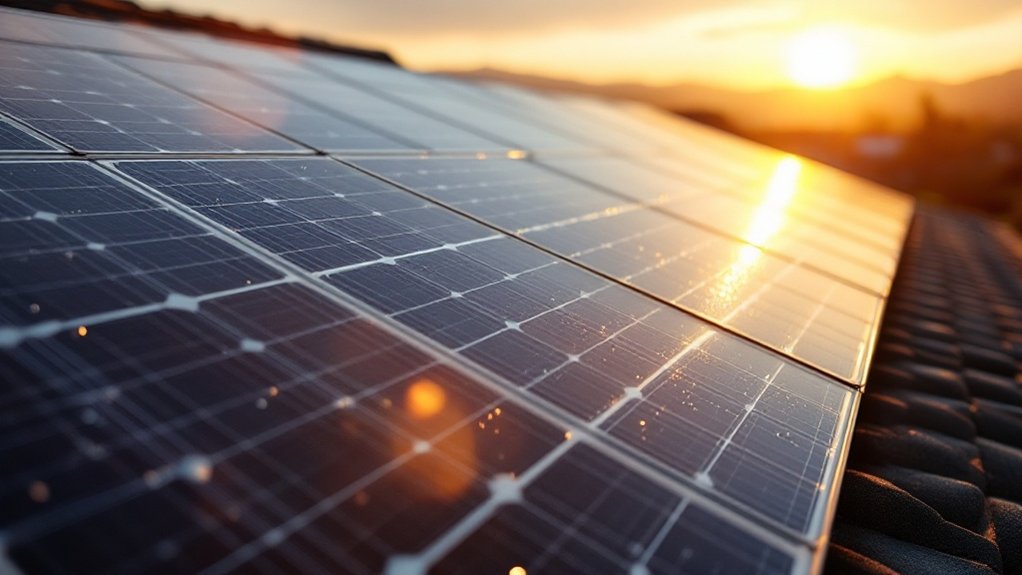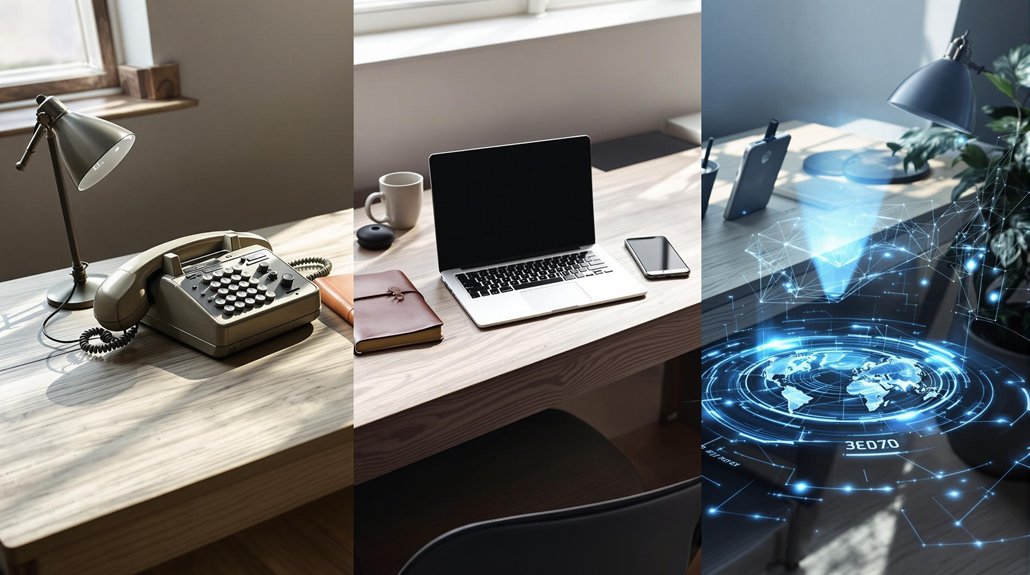Solar panels are remarkably resilient pieces of technology that typically last 25-30 years. Modern residential panels convert 15-22% of sunlight into electricity, with monocrystalline versions achieving the highest efficiency. They're getting cheaper too – prices have dropped 40% in the last decade. While China dominates global production at 80%, installations can boost home values by 3-4%. But watch out for dust and debris, which can slash efficiency by 30%. The story of solar power keeps getting brighter.

Solar power's golden child – the solar panel – has come a long way since its clunky beginnings.
Today's residential panels convert a respectable 15-22% of sunlight into electricity, with monocrystalline panels leading the pack at 20-22%. Not exactly Nobel Prize numbers, but they're getting better every year, improving by about half a percent annually. And let's be honest, it's better than nothing. With prices dropping nearly 40% in a decade, more homeowners are embracing solar technology. This technology has made remarkable strides since Bell Labs first demonstrated solar panels in 1954.
China dominates the solar scene, churning out over 80% of the world's panels.
With a staggering 80% share of global production, China's solar manufacturing prowess leaves other nations in the shade.
In 2022, global production hit a whopping 379 GW. The manufacturing process is no joke – from silicon ingots to wafers to cells to modules. It's like a high-tech sandwich, minus the tasty part. Speaking of which, these panels are getting a second life through recycling. Finally. The energy storage systems help maintain power supply during peak demand times when sunlight isn't available.
Installing solar isn't exactly a weekend DIY project.
The whole process – from initial handshake to flipping the switch – typically drags on for one to three months. Sure, the actual installation only takes a few days, but bureaucracy moves at its own pace. Permits alone can take up to eight weeks. Welcome to red tape paradise.
These silicon sandwiches are surprisingly finicky performers.
They actually work better when it's cool outside (plot twist!), and they hate shade almost as much as vampires do. Dust and debris can slash their efficiency by up to 30%. Still, they're pretty hardy – lasting 25-30 years with warranties to match, though they lose about 1% efficiency annually.
The numbers tell an interesting story: residential systems cost between $10,000 and $20,000 before incentives, and they can boost home value by 3-4%.
The industry isn't sitting still either. By 2030, global solar capacity is expected to hit 2.8 TW. New technologies like bifacial panels and perovskite cells are shaking things up, and floating solar farms are becoming a thing – because apparently, we've run out of room on land.








